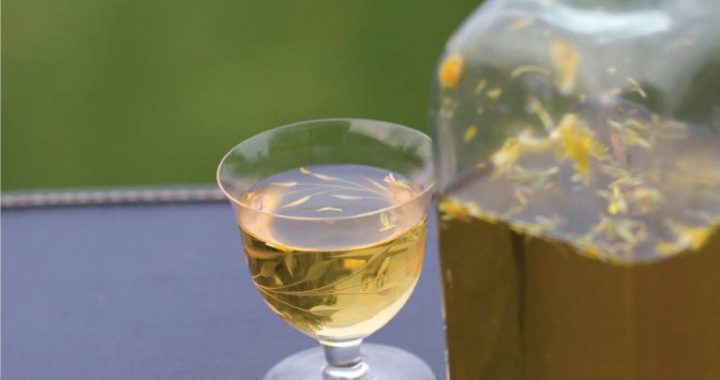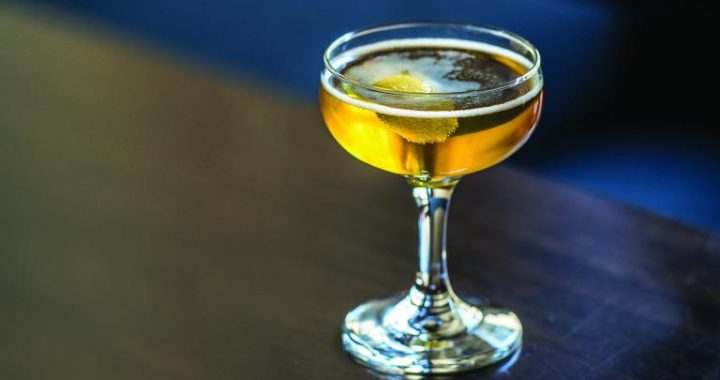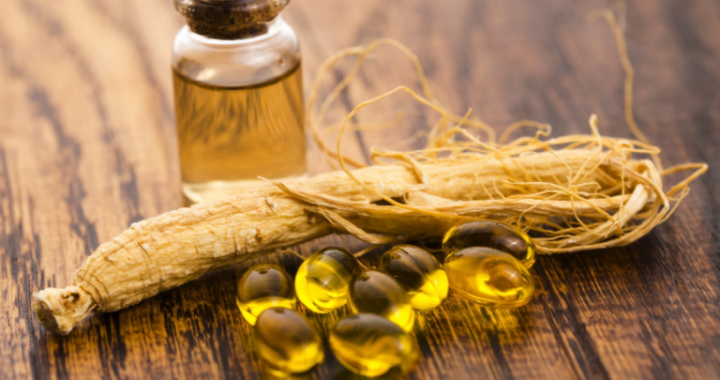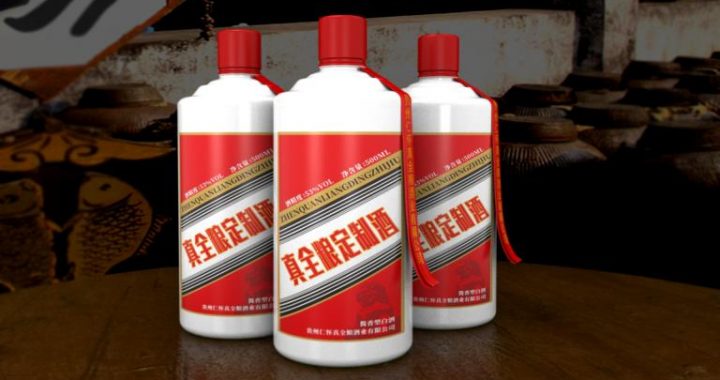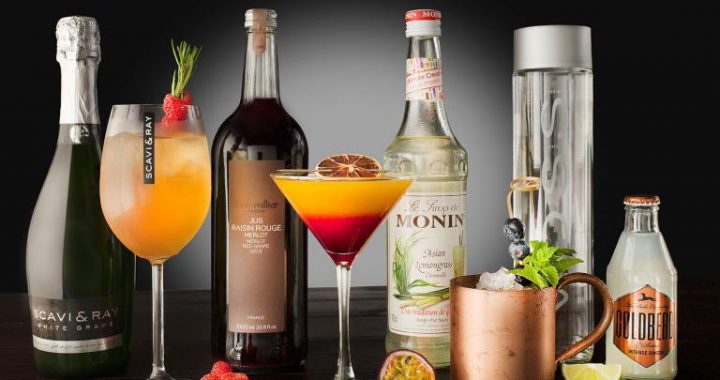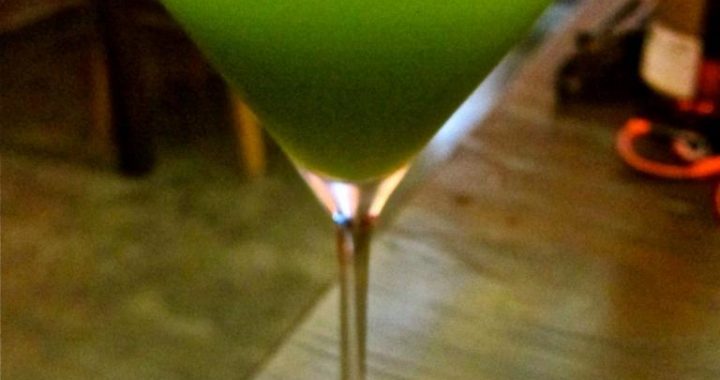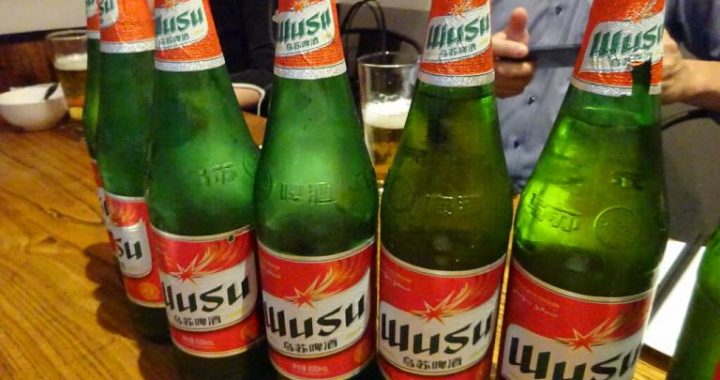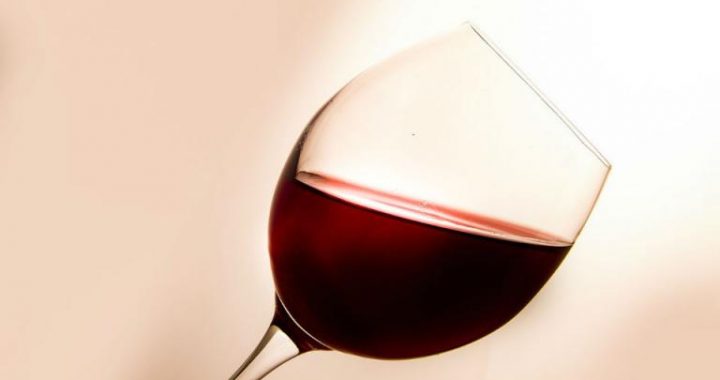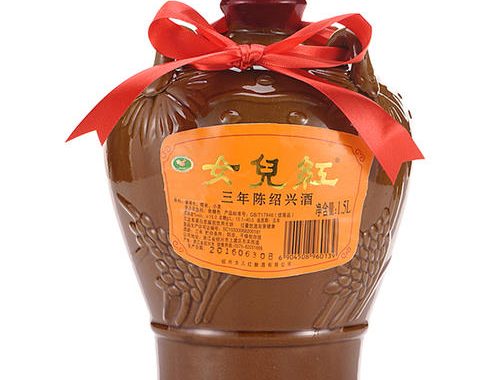Drinking Tea and Drinking Wine
23 min readThe Chinese people pioneered the cultivation, manufacture and drinking of tea. As a result, China is known as the”birthplace of tea”. Chinese people enjoy drinking tea and find that it helps them relax and become calm. As the Chinese saying goes,”tea can clear the mind”. The Chinese also drink tea for their health, to cultivate their minds and because they have an interest in tea ceremonies. Most importantly, tea drinking encapsulates many key Chinese concepts such as the unity of man and nature and the importance of natural harmony and perception.
Like tea, wine has been a fundamental part of Chinese society since ancient times.

Throughout much of China’s history, people have offered wine as a sacrifice to their ancestors to show respect, they have drunk wine to relax and to help them create poems and essays, and they have talked and drunk wine with relatives and friends at banquets.
Wine has permeated almost all areas of Chinese social life.
Chinese People’s Fondness for Tea
The Chinese say that,”firewood, rice, oil, salt, sauce, vinegar and tea are the seven necessities to begin a day”. This saying shows that tea is fully integrated into daily life in China. Chinese people like drinking tea and it brings them comfort and makes them feel happy. Some drink tea at home and some drink it in teahouses, some drink tea alone and some drink it with other people, while some drink tea early in the morning and some make tea in the afternoon to refresh.
“Fajing zen tea”in the first-class protected area producing West Lake Longjing tea is organic green tea. This is planted, collected, dried and used by monks in the Fajing Temple in Hangzhou. In the photograph,a team of monks is attending a “tea spray and pray”ceremony in a tea garden.
A girl collecting tea leaves in a tea garden in Tongdao, Tea growers drying tea leaves in Fenghuang Town, AUnan.
Chaozhou, Guangdong. The Fenghuang tea production area is the oldest tea production area in Guangdong Province. It is the home of Chinese oolong tea.
Modern science has proved that tea leaves are not high in caffeine, calories and cholesterol(unlike coffee and cocoa) and that they are also not high in sugar(unlike fruit juices). Tea contains many vitamins, tea polyphenols, essential oils, fluorine and other beneficial chemicals.
It has been shown to refresh the mind, quench the thirst, promote urination and improve eyesight and health. Overall, it is recognized as a natural and healthy drink that benefits the human body.
As the modern Chinese scholar Lin Yutang said in Chinese People’s Foods and Drinks,”Tea has the effect of prolonging Chinese people’s lives because it helps them digest food and makes people calm.”
As said, China is the birthplace of tea. The subtropical mountainous areas in the southwest of China are the place where wild tea plants originated. From the time of the Tang Dynasty, trade sprung up between the people of this tea-producing region and nomads from northern and northwestern regions. This trade mainly involved the exchange of tea for horses. In the mid-Qing Dynasty, this bartering was gradually replaced by monetary transactions. Around the time of theWestern Han Period, tea became a beverage. Before that point, tea was mainly used as a sacrifice and a food. Today, some minority ethnic groups in the southwest of China still retain the age-old custom of taking tea as a food. In the Tang Dynasty Buddhism became widespread in China.
Buddhists found that drinking tea could not only get rid of drowsiness during meditation, but could also help them digest food. Because of this, they advocated its consumption. As a result, as the saying goes,”there was tea in almost all temples”. Another Chinese saying also highlights the link between Buddhism and tea:”Famous brands of tea have been produced by famous temples since ancient times”. This link was probably established because most temples had land, which their monks could help cultivate. The involvement of monks led to improvements in the quality of tea. It also led to the promotion of the “tea arts”as many monks attained a high level of cultural sophistication. The habit of drinking tea soon spread from China’s temples to its general population.
From the emperor and his ministers to tradesmen and potters, tea drinking became a social custom that was practiced by people from all social strata(whether rich or poor). In 1168 AD, the Japanese Buddhists monk Eisai(1141-1215) came to China to study Buddhism. While he was in the country he carefully studied the Chinese tea arts. When Eisai returned to Japan, he brought many Buddhist scriptures and tea seeds back with him. It was in this way that Chinese tea arts spread to Japan.
These arts gradually evolved into tea ceremonies that had distinct Japanese characteristics. The Buddhists monk Eisai is therefore credited with being Japan’s “tea ancestor”.
Old tea growers are carefully selecting Qimen black tea leaves for the last time in Qimen, Anhui.
Pu’ er brick tea produced in Jingdong Yi Autonomous County, Yunnan.
Along with Japan, more than 100 countries and regions around the world have, either directly or indirectly, introduced tea leaves from China. This can be seen in the pronunciations of the various words used for”tea.”There are two main pronunciations of the Chinese character for “tea”: one is the Mandarin pronunciation “cha”, which is based on the northern dialect, the other is”tee”, which is based on the southern dialects of Guandong and Fujian’s coastal areas. In countries that introduced tea from the north of China, such as Japan and India, the pronunciations of words for tea are similar to cha. For example, the pronunciation of the Russian word for tea is similar to chai, the pronunciation of the Arabian word for tea is shai and the pronunciation of the Turkish word for tea is chay. In countries that introduced tea from the southern coastal region of China, the pronunciations of words for tea are similar to tee. For example, the English word for tea is tea, theSpanish word for tea is te, the French word for tea is the and the Germany word for tea is tee. This all shows that many of the words used for”tea”around the world are basically transliterations of the two main pronunciations of the Chinese character for “tea.”
The spread of tea around the world was made possible by the tea trade. The tea trade developed in the early 19h century, at which time tea leaves, silk and ceramics became the three main products exported by China. In Europe, Britons were the first to begin drinking tea. In the early 17th century, the British became fond of Chinese tea, and the custom of drinking tea became widespread throughout the country. To meet the resulting huge demand for tea, the British government ordered the East India Company in Asia to ensure that the British mainland received a dependable supply of leaves. As tea became more and more popular among ordinary people, the demand for tea in Britain(and the rest of Europe) increased rapidly. In the early 19h century, China exported more than 40 million pounds of tea leaves to Britain, which caused Britain to have a trade deficit with China. To change this unfavorable(for them) situation, Britain purchased opium from India, Bangladesh and other countries and exported it to China in exchange for Chinese tea leaves. This caused the”Opium War”that dramatically influenced China’s modern history.
Tea leaves are made of tender leaves collected from tea plants. They can be classified into six categories: green tea, black tea, oolong tea (blue tea), white tea, yellow tea and dark tea.
This categorization is done according to the quality of the leaves and the way in which they are produced.
As said, Chinese people like drinking tea. They drink green tea in the spring, chrysanthemum tea in the autumn, and black tea and oolong tea in the autumn and winter(chrysanthemum teas are made from chrysanthemums that have been dried in the sun. The most famous types come from Hangzhou in Zhejiang). Because they drink different kinds of tea all year round, Chinese people can recognize many different tea types. They can also tell the difference between old and new tea, and can even distinguish the season during which the leaves they use to make tea were collected.
The growth and collection of tea leaves is seasonal. Tea leaves are usually collected in spring, summer and autumn. Leaves collected in different seasons have quite different shapes and qualities.
Spring tea leaves are collected from the beginning of March to the Tomb-sweeping Day(around April 5 every year). They are usually called “tea leaves collected before Pure Brightness”or”first earliest tea leaves”by Chinese people. They are lightly green and taste pure but a little unripe.
“Grain Rain”is one of the 24 solar terms. It falls around April the 20h every year and takes place two weeks after the Tomb-sweeping Day. At this time of year, drizzle falls in the region south of the lower reaches of the Yangtze River and nourishes the five cereals. It is at this time that the collection of green tea leaves reaches a second high point. Tea leaves collected between the Tomb-sweeping Day and Grain Rain are called”tea leaves collected before rain”. While spring tea leaves collected after Grain Rain are called “tea leaves collected after rain.”Generally speaking, the quality of green tea leaves collected in early spring is the best and they have the greatest value.
Tea leaves that are less than a year old are called”new tea leaves”, while those that have been stored for more than a year are called “old tea leaves”. New green tea and oolong tea leaves are considered to be better than old green tea and oolong tea leaves, but old Pu’ er tea leaves are thought to have a more mellow taste than new Pu’ er tea leaves.
The key thing that differentiates Chinese tea products from each other is whether”fermentation”has been used in the production process.
Unfermented tea leaves are called “green tea leaves”. These are produced using the tea plants’new sprouts and leaves. Their production involves three procedures: kill-green(the process of halting tea leaf fermentation using heat), rolling and drying. When green tea leaves are put into water, the water becomes dark green or yellowish green and tastes fresh but a little unripe. Green tea has the longest history of all the different Chinese teas. It is also the most widely grown type of tea in China and has the highest production output. There have been many famous brands of green tea since ancient times. These include West Lake Longjing tea, Dongting Biluochun tea, Huangshan Maofeng tea, Sichuan Mengding tea, Lushan Yunwu tea, Xinyang Maojian tea and Liuan Guapian tea.
After fermentation, tea leaves gradually change color from a dark green to red. The longer they are fermented, the redder they become. Their smell also changes. Depending on the period of fermentation, they can have the scent of flowers, the scent of ripe fruits and the scent of maltose.
Totally fermented tea is called “black tea”. The name comes from the color of the tea leaves and the tea itself. The production of black tea usually involves four main procedures: withering(exposing fresh sprouts and leaves to the sun outdoors and then drying them in the shade indoors), rolling, fermentation and drying. This preparation process significantly changes the chemical composition of the fresh leaves. Tea polyphenols are decreased by more than 90% and new components such as theoflavin and thearubigins are generated. The scent of the tea also gets stronger. Famous types of black tea include Qimen black tea, Ninghong kung fu tea, Fujian Minhong tea, Yunnan Dianhong tea and Guangdong Yinghong tea. Half fermented tea, is known as oolong tea. It is also called blue tea. Oolong tea is produced using the kill-green process(used for the production of green tea) and the fermentation process(used for the production of black tea). Half fermented tea is therefore fresh, like green tea, and strongly fragrant, like black tea. The origins of half fermented tea have been traced to Anxi, Fujian, and famous half fermented teas include Anxi Tieguanyin tea, Wuyi Rock tea, Fenghuang Shuixian tea and Dongding Oolong tea. White tea is a slightly fermented tea.
It is silvery white in color and has a fresh scent. Famous white teas include Fujian White Peony tea and Baihao Yinzhen tea. Yellow tea is a type of fermented tea. Its production process is similar to that of green tea, but it includes an additional procedure known as “piling”. Famous yellow teas include Mengding yellow buds and Huoshan yellow buds.
After fermentation, fresh leaves become darker in color and can then be made into “dark tea.”
This type of tea leaf can be put directly into water for drinking or compressed to make various types of brick tea. Pu’ er tea is representative of this type of tea.
Reprocessed tea is a term that refers to products made by reprocessing the raw materials of the six basic tea types. Reprocessed teas include flower tea, compressed tea, extracted tea, fruit tea and medicinal health tea. Flower tea is also called scented tea. To make it, fragrant fresh flowers andnew tea leaves are soaked together. Flower tea has a strong scent and its water is dark. This type of tea is loved by people in the north of China who favor strong scents. Green tea, black tea and oolong tea are the main products used as a base for flower tea.
Flower tea is classified according to its different scents and the flowers it contains. Varieties include jasmine tea, magnolia flower tea, sweet-scented osmanthus tea and chloranthus tea. More Jasmine tea is produced than any of the other flower tea varieties.
Compressed tea is usually made by steaming and compressing black tea and dark tea together.
This makes the tea easy to transport and store and gives it a strong flavor. Compressed tea is very popular in areas inhabited by minority ethnic groups. For example, milk tea, which is loved byMongolians, is made by boiling compressed tea with horse, cow and sheep milk. Tibetan buttered tea and Yunnan Pu’ er tea are also types of compressed tea. Extracted tea is solid or liquid tea that is made using hot water extraction, filtration or concentration and drying. Various tea products asused as its raw materials. Examples of extracted tea include the canned teas, concentrated teas and instant teas that have appeared on the market in recent years.
China’s most popular and famous brands of tea boast good colors, smells and tastes. These qualities are produced by a combination of factors, which include the tea varieties used, the growing conditions the tea enjoys and the collection and processing methods that are employed.
Because these factors are all carefully controlled to maximize the quality of the finished product, Chinese tea enjoys an excellent reputation both at home and abroad.
In China, there are numerous tea products and brands of tea. People’s taste in tea differ around the country. Generally speaking, people in the north of the country like drinking flower tea that has a strong scent. People in the region south of the lower reaches of the Yangtze River cannot do without green teas such as Longjing, Maojian and Biluochun. People in the southwest enjoy the mellow flavour of Pu’ er tea. People in Fujian, Guangdong and Taiwan like oolong tea. While residents of pastoral areas mainly drink milk tea.
Some people say that green tea represents the scholarliness of the region south of the lower reaches of the Yangtze River. It is also thought that black tea represents elegance, peace and ease, that mellow and smooth oolong tea symbolizes the wisdom of the old and that flower tea is like a busy marketplace, strong and direct. Therefore, it is possible to roughly guess where a Chinese person is from, and also to get an idea about his personality and culture, from the tea he drinks.

In addition, some Chinese areas that are inhabited by minority ethnic groups have tea products and tea customs that have a strong local color and exhibit a high degree of ethnic charm. For example, the Bai people from Yunnan offer “three-course tea”to guests (this tea provides three tastes:”bitterness, sweetness and aftertaste”). The Dong people serve “oil tea”to their guests. This is made by boiling tea leaves, nuts, oil and salt together. The Tujia people from Hubei drink”oil tea soup”. This is made by, first, frying tea leaves and Chinese prickly ash in tea oil. Then water is added along with ginger shreds, pork offal, walnut kernels, fried soybeans, fried peanuts, fried vermicelli, and other ingredients. The Hui people in Ningxia like welcoming guests with “lidded bowl tea”. It is traditional to, first, remove the lid of the tea bowl in front of a guest. Then tea leaves, sugar, red dates, longans, Chinese wolfberries, sesame, walnut kernels, raisin, and other ingredients are added to the bowl. Finally, boiled water is poured into the bowl, its lid is replaced, and the bowl is offered to the guest using two hands as a mark of respect. The Hakka people in the south of China often drink”pounded tea”. This is prepared by pounding tea leaves, sesame, peanutsand some Chinese herbal medicines in a ceramic mortar. The resulting powder is then placed into boiling water. Many of the ethnic groups who live in China’s pastoral areas enjoy milk tea. This is prepared by adding seasonings to tea leaves as they are being boiled. Pastoral areas lack vegetables, so tea leaves are an important source of vitamins and microelements for the people who live there.
Although China has many diverse tea drinking customs, most of the tea in the country is made by basically placing tea leaves into hot water. However, one kind of tea is different. This is called “worm tea”and it is drunk in the mountainous areas of Hunan, Guizhou and Guangxi. Worm tea is actually made from the dried fecal pellets of tea worms. Although the source of worm tea seems peculiar, it is actually a beverage that has a mellow and pleasant taste. When drunk, it promotes salivation and quenches the thirst. It also has a high medicinal value and is thought to be able to protect a person’s health. It can be used to treat diarrhea, gingival bleeding and hemorrhoidal hemorrhage. Worm tea is categorized according to the types of plants that on the tea worms that produce it have eaten. It is classified as either trilobite tea, white tea worm tea and platycarya strobilacea work tea. Trilobite tea(which comes from Chengbu in Hunan) looks clear and tastes like Pu’ er tea. It is very precious because it is only produced in small quantities.
The custom of drinking tea has a long history in China. Of all the people who have played a part in this history, Lu Yu (733-804) of the Tang Dynasty made the greatest contribution to the popularization of China’s tea and tea culture. Lu Yu, who spent his childhood in a temple, wrote the world’s first work about tea leaves-The Classic of Tea. This work combines information about tea (obtained from ancient books and records) with the results of Lu Yu’s own in-depth studies. It is a key historic document about China’s tea culture. It systematically covers the origin and history of tea, the properties of tea plants, the quality, types and places of origin of tea leaves, the methods by which tea leaves are produced and collected, the techniques of brewing tea, the use of tea utensils and the experience of drinking tea. The publication of The Classic of Tea by Lu Yu made China’s tea culture flower during the Tang and Song dynasties and exerted a great influence both at home and abroad. Lu Yu was therefore known as the “Tea God”and the “Tea Sage”in later eras. Today, people in Japan, South Korea, the United States and Great Britain collect versions of his historic book.
In the mid-Tang Dynasty, the Chinese developed a competitive way of evaluating both the quality of tea leaves and the level of a person’s tea making skills.
This evaluation method was known as a “tea battle”. It was regarded by the ancient Chinese as being the most sophisticated way of tasting tea. Later, in the Song Dynasty, tea tasting became very widespread, and emperors, high-positioned officials and ordinary people all participated in tea fights. This was the period of Chinese history during which there was the greatest enthusiasm for this type of tea tasting. Tea fights took place in tea production areas, temples and tea markets. The emergence of many famous brands of tea was either directly or indirectly related to tea fighting.
In a tea fight, two or three people get together and”dedicate”their precious tea leaves. They then boil them to make tea and compete with each other to see which taste best. In the past, teas were evaluated in the following way:”new”tea products were expensive,”fresh”tea was good,”sweet and smooth”tea tastes were the best,”real”tea scents were nice, and “colorless”tea water was great. Alongside the rise in popularity of tea fights during the Song Dynasty, blue porcelain bowls were gradually replaced with black tea bowls (the “black porcelains of the Jian Kiln”). The contrast between these black tea bowls and white tea gave people a special sense of visual beauty.
The Classic of Tea from the Tang Dynasty and the “tea fights”of the Song Dynasty played an important role in the development of China’s tea culture. They both directly influenced the way in which modern Chinese people evaluate tea leaves. They also influenced other aspects of the tea-making process, such as the type of water that people use and the temperature it is heated to.
For people in ancient China, mountain spring water was the best water in which to boil tea leaves. River water, snow water and rain water were second to it in terms of quality, while well water was the worst option. This mirrors the modern view, which holds that fresh soft water is better than hard water(water containing a lot of minerals) for making tea.
When tea is bring made, most tea products should be put into water which is at nearly 100 degrees Celsius. However, green tea leaves and lightly fermented tea leaves should not be put into water that is above 90 degrees Celsius.
The volume of tea that should be used varies from one-fourth to three-fourths of the capacity of the pot in which the tea is being made. Different tea products should be put in different types of pots. Porcelain pots should be used for flower tea to prevent the loss of its scent. Glass cups should be used for light-scented green tea so that its scent is retained and so that the color and shape of its tea leaves can be appreciated. Grit ceramic tea utensils are best for black tea and for half fermented tea.
Tea utensils have an interesting history. Before the Tang Dynasty, there was no distinction made between the utensils used for drinking tea and eating food. At the end of the Tang Dynasty, the purple clay teapot emerged. This kind of teapot is the ideal utensil for tea. It is different from ordinary pottery, and is made by burning its raw material(a kind of smooth purple-red soft mud) atabout 1,100 degrees Celsius. Purple clay teapots are un-glazed(both on their inside and outside).
They are also airtight but not watertight and have a fine, double-pore structure, which can be observed under a 600x microscope. Because of their unique properties, purple clay teapots preserve the taste of tea well. They also have a lid in which there is a hole. This lets steam out and ensures that condensing water does not drop back into the pot and cause the tea it contains to ferment and loose its flavor. In addition, purple clay pots conduct heat slowly and do not burst easily, even when they are heated on a stove.
Purple clay pots are produced in Yixing, which is located at the juncture of Jiangsu Province, Zhejiang Province and Anhui Province, beside the Taihu Lake. It is not only a famous tea producing region, but is also known as China’s”pottery capital”. Yixing purple clay pots began to be made during the Northern Song Dynasty. In the Ming Dynasty, teapots began to be widely used and Yixing purple clay teapots became famous. Later, many scholars participated in the design and production of purple clay teapots. The pots they made often incorporated elements of poetry, literature, calligraphy, painting, seal cutting and sculpture. They therefore had a very high artistic value. At the time, high-grade Yixing purple clay teapots were considered to be precious possessions, which symbolized a person’s knowledge, position and status.
The longer a purple clay teapot is used, the smoother and more elegant its color becomes. The scent of the tea it makes also becomes mellower.
Many people who are fond of drinking tea also love collecting and appreciating teapots. Many tea connoisseurs also prefer to use specific teapots for specific tea products. This is done in order to retain the purity of the tea the teapots make.”Collecting pots”and “nourishing pots”have long been regarded as elegant habits, and this holds true today.
Yixing purple clay teapots are used for kung fu tea. Kung fu tea is not the name of a kind of tea leaf or a tea type. It is a special tea-making custom that is followed in the south of Fujian and in the vicinity of Chaozhou, Guangdong. Its name comes from the fact that it requires a certain amount of skill in kung fu.
Kung fu tea is a tradition that has been handed down from the Tang Dynasty to the present time. Chaozhou people living abroad think of it as a symbol of return to ancestors and theirauthentic kung fu tea ceremony closely follows the ways of the ancient custom. The number of people at a Chaozhou kung fu tea ceremony(both host and guests) is limited to four(which reflects the traditional concept of “pure-minded harmony”). This is a rule that was developed in reaction to the excessiveness advocated by tea drinkers in the Ming and Qing dynasties. At the start of such a ceremony, the guests take their seats on the host’s right side, according to seniority or status. When the guests are seated, the ceremony begins. Tea utensils for kung fu tea are very particular. Teapots are small and exquisite, only about the size of a fist, and teacups are only the size of half a table tennis ball. Half fermented green oolong tea leaves with red edges are used in the ceremony. During the ceremony, the host first takes enough leaves to almost fill up the teapot and then compresses them into the pot with his or her fingers(the more tea leaves used, the stronger the resultingtea). The”high to rinse, low to pour”method is then used to make the tea. Boiling water is first poured from a height into the teapot near the inner edge of its opening. This is done in one go, at amoderate speed. This water is used to wash the tea leaves and to heat the tea cups and pot, it is not drunk. The pot is then refilled with fresh hot water, this time poured from a low height. The tea isthen brewed and, when it is ready, it is poured out. When the tea is poured out, the teapot should be as close to the teacups as possible and should shuttle between the four small cups until each cup is 70 percent full(in other words the cups should not be filled one after another).
There are also rules on how tea should be tasted during the ceremony. One should first rinse one’s mouth with cool boiled water. Then one should smell the tea’s fragrance and enjoy the teawater’s color. Only then should one taste the tea, and this should be done slowly. One cup of tea should be drunk in three gulps, which allows the fragrance to gradually spread from the tip of the tongue to the throat.
The Kung fu tea ceremony aims to create a moment of harmony between man and nature. It therefore truly reflects the ideas at the heart of the Chinese tea arts. It also mirrors the moderate, honest, introverted, reserved and quiet character of the Chinese people themselves.
Kung fu tea epitomizes the unique qualities of traditional Chinese tea culture. The ceremony’ sharmonious atmosphere, its exquisite tea utensils, its careful pouring rituals and its tranquil atmosphere are very reminiscent of the teahouses of ancient China. Such teahouses thrived in the Song Dynasty when they catered to people from across the social strata. Some of these teahouses were very elegant and had calligraphic works and paintings by famous artists hung on their walls.
Some also displayed fresh seasonal flowers and “potted landscapes”and had musicians in residence to play music for their guests.
During the reign of Emperor Qianlong (1736-1795) and the reign of Emperor Jiaqing(1796-1820) of the Qing Dynasty, Beijing’s teahouses were places where people could drink tea and enjoyfolk art performances at the same time. They could bring their own tea leaves to these teahouses and only have to pay a”water fee”. The link between folk art and tea in the city is also shown by the fact that Beijing’s theaters were called “tea gardens”in the past. Big bowl tea is another characteristic of Beijing’s traditional tea culture-tea sellers used to set up a shed to provide shade under a big roadside tree and invite the people passing by to drink big bowl tea. Such sheds would contain earthen tables, earthen chairs and rough tea bowls. Today such tea stalls still exist, but they are very rare.
Traditional-style teahouses are, however, still very common in modern China, especially in the region south of the lower reaches of the Yangtze River where they can be found in all big cities and small towns. Today, there are also many new-style teahouses that combine the characteristics of cafes and bars, or which sell food and refreshments.
People drinking tea and watching a folk art performance in the Laoshe Tea House in Beijing.
Among Beijing’s traditional teahouses, the most famous is the Laoshe Tea House. Its archway, tables, chairs, cups and pots all have an air of great antiquity. While sipping tea at this teahouse, tea drinkers can listen to story-telling in the Beijing dialect. They can also sing an opera aria if they are in the mood. In the teahouse, many tea culture items are also for sale.
Southern teahouses are also called “shops.”Indeed, old Guangzhou people call drinking tea in teahouses”sighing for tea in teashops.”In this case,”sighing’ means enjoyment. Guangzhou people are famous for their love for drinking morning tea. Every morning in Guangzhou, tea drinkers wait in front of teahouses and rush in when they open, they are immediately served tea and cake. Drinking light-scented morning tea is a traditional Guangzhou custom, similar to the English custom of drinking “afternoon tea.”
Sichuan people have a long history of drinking tea and there are many teahouses in the region.
In Chengdu, for example, one can see lines of teahouses all full of people. Teahouses have a similar place in Chengdu society as bars do in Paris and cafes do in Vienna. Big teahouses in Chengdu have hundreds of seats, while small ones have only three to five tables. However, when one walks into a Chengdu teahouse, whether it is big or small, one gets a unique impression of the place and its people. The utensils used in a Chengdu teahouse include tea bowls, tea boats and lidded tea bowls.
The most popular type of tea in Chengdu is made from flower tea leaves. Flower tea clears away heat, which suits the Chengdu people as they like eating hot peppers. The waiters in many Chengdu teahouses pour out tea from long-necked copper pots(this is a unique skill). To do this, the waiter will hold his copper pot high in the air, then, as he starts to pour the tea, he will lower the pot to the cup, all without spilling a drop. This makes the pot look like it is a dragon spitting water. Chengdupeople like going to teahouses for leisure and relaxation. For example, old people visit traditional teahouses to taste tea, chat and listen to traditional Chinese dramas, while working people like visiting teahouses to relax, talk and discuss business. Visitors to Chengdu teahouses also eat melon seeds and peanuts, read books and newspapers, play cards and chess, enjoy looking at flowers and also hold bird competitions. When tired they will often fall asleep. Today, many teahouses have introduced modern technologies, such as karaoke, videos, the internet and other services, however, the peaceful and relaxed atmosphere of the Chengdu teahouse still remains.

